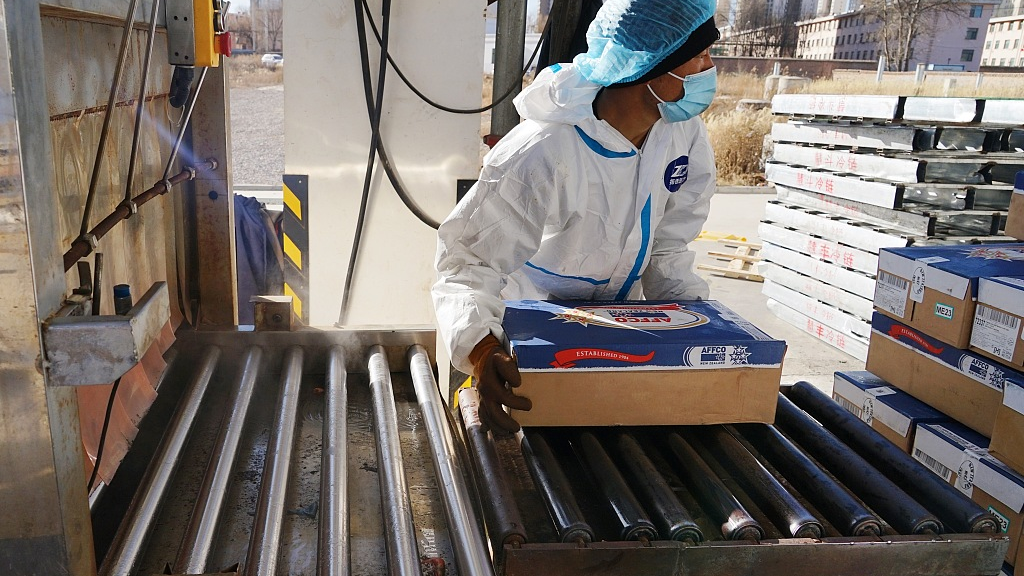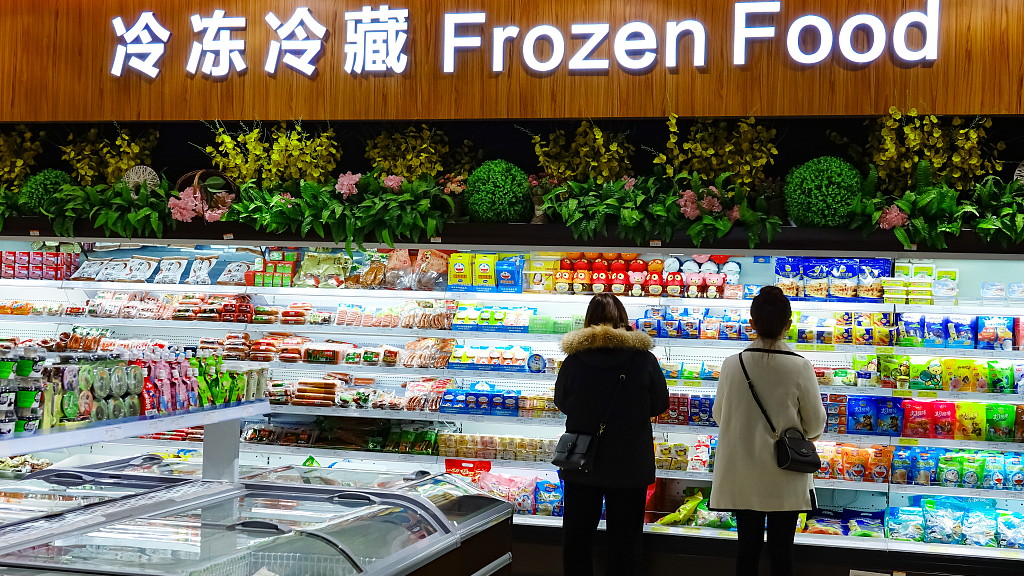
An imported cold chain food supervision warehouse in Xining, northwest China's Qinghai Province, December 20, 2021. /CFP
An imported cold chain food supervision warehouse in Xining, northwest China's Qinghai Province, December 20, 2021. /CFP
In an article published on Science magazine in August this year, cold chain was believed to possibly play a role in the emergence of SARS-CoV-2, the virus that caused the COVID-19 pandemic.
It is not the first time that cold chain has been listed as a possible pathway. In a report of COVID-19 origins jointly released by the World Health Organization (WHO) and China in March this year, it is proved that virus can be carried long distances on cold-chain products.
"There is good evidence from the outbreaks in Beijing, Qingdao [in east China's Shandong Province] and Dalian [in northeast China's Liaoning Province] that this cold chain plays a role," said WHO team member and zoologist Peter Daszak in an interview with CGTN this February.
According to Science's article, cold chain has been encouraged by China since October 2018 in an effort to prevent the African swine fever virus spread through live pig transport routes, which facilitate the use of cold-chain transport for all meat types, including those susceptible to SARS-related coronavirus infection.
In Beijing and Qingdao cases, infected people were exposed to the cold chain without other possible sources of the virus, Wang Chen, director of the National Center for Respiratory Medicine, told a press conference this July. He added that positive results of nucleic acid tests have been found on cold-chain goods.
"Given the two points above, the chain of evidence for the transmission has become relatively complete," said Wang. The virus can survive for 21 days in winter, so the virus can be transmitted across regions in a low temperature during the cold-chain transportation, Wang explained.

Frozen food section in a supermarket in Qingdao, east China's Shandong Province. /CFP
Frozen food section in a supermarket in Qingdao, east China's Shandong Province. /CFP
In October, China detected and isolated live coronavirus in a package of imported frozen cod during a trace-back investigation into the outbreak in Qingdao. It was the first time that live virus was isolated from cold-chain food packaging.
Other port cities in China like Dalian also experienced coronavirus transmission traced back to imported cold-chain food, signaling that the virus can be carried out long distances across borders.
For example, Chinese customs said in November 2020 that the virus has been found on the package of two batches of frozen beef imported from Argentina and on frozen seafood imports from Indonesia.
Not only China, but also overseas countries such as New Zealand and Singapore experienced coronavirus outbreak related to cold chain.
Earlier last year, New Zealand swiftly closed off the international border and imposed one of the world's toughest lockdowns, which stamped out local transmission for 102 days. However, its first locally transmitted COVID-19 outbreaks known as the "Auckland August cluster" still occurred, and the earliest case is a man working at an Auckland cool store.
And a COVID-19 cluster also forced Singapore to close its major seafood port – the Jurong Fishery Port – after seven individuals working at the port tested positive for COVID-19.
Read more:
Coronavirus may have come to Wuhan via cold chain: China CDC expert
COVID-19 origins: Could the virus have spread through cold chain?
Tech Breakdown: Why is cold chain always a risk point for COVID-19?
Origin of COVID-19 resurgence in Beijing: Cold chain food contamination
Has cold chain become the new hotbed for coronavirus?

